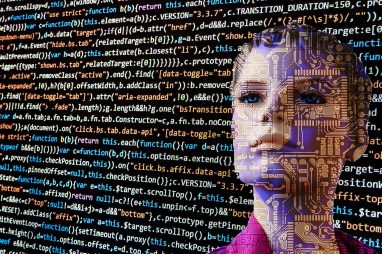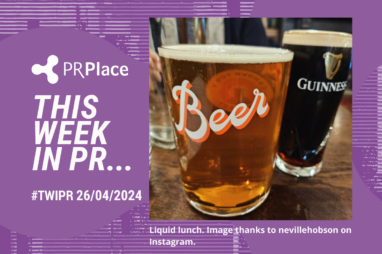Using Social Media Listening (SML) to Prevent Crises
About the author
Abdulaziz Othman prepared this article as part of a CIPR Professional PR Diploma assignment while studying with PR Academy.


The usage of social media as a business tool among enterprises has been exponentially increasing. For instance, a statistic issued by Eurostat in 2021, showcases that 59% of European enterprises exploit social media to increase their presence on the internet, which is an exponential increase from 2015’s 37%.
One of the major advantages of organizations using social media, from a PR perspective, is the two-way communication between an organization and its consumers/target audience. Sunnie Rothenburger states that this two-way communication helps an organization gather customer feedback and respond to it, give the organization a sense of its brand reputation, build the organization’s brand image, and control a crisis once it arises.
This article will explore how can enterprises use Social Media Listening (SML) tools to take preventive rather than just reactive measures when dealing with crises.
Why Does it (SML) Matter?
Buzoianu, C.; Bîra, M. define social media listening as a process that enables a brand to carefully follow a significant volume of social media conversations by means of tracking relevant mentions referring to topics of interest. For example, enterprise XYZ that is specialized in producing digital equipment can use SML to track the latest technological developments to implement in their future products (for ease of reference, I will use this hypothetical enterprise in further examples). Moreover, Enterprise XYZ can use SML to monitor their competitors’ conversations and development, and analyse the market based on their competitors. This can be applied in any professional field to help monitor market trends and apply competitive analysis. However, as a PR function, organizations would want to monitor or “listen” to conversations on social media regarding their brand, which is crucial to ensure that their brand image and reputation is intact.
Most SML tools provide sentiment analysis, which is the automated process of analyzing text to determine the expressed sentiments (positive, neutral, or negative). For example, the 3 different sentiments can be expressed as follows:
Enterprise XYZ used a SML tool and categorised three different mentions on their Twitter account as follows:
- Positive Sentiment J: “Your products offer the best value for money in the market!”
- Neutral K: “I visited the XYZ store today” – This comment does not reflect any insight about how the customer feels about XYZ, hence it is neutral and cannot be categorized as positive or negative.
- Negative L: “The product I just purchased is faulty and I have not yet been compensated!”
Therefore, sentiment analysis can provide enterprises with insights and feedback from the public regarding their brand image and its reputation, and enterprises need to closely monitor negative sentiments. For instance, Cooper et al., state that consumer reactions range in their manifestation from benign complaining or brand-switching behaviour through to extreme forms such as organized anti-brand communities and collaborative attack. Therefore, one of the objectives of SML from a PR perspective is to proactively prevent these extreme forms of negative sentiments before they turn into a crisis.
Crises & Reputation
The core of most PR objectives is to improve or maintain a brand’s reputation. A Forbes article states that the 3,000 agency heads operating in the ICCO’s 41 member associations have been surveyed in the World PR Report 2020; they showcased that reputation is ranked by corporate leaders as their most valuable assets. Additionally, 87% of surveyed executives rate reputation risks as more important than other strategic risks. It is becoming blatantly clear that C-suites executives are becoming more aware that a positive reputation or a positive brand image directly leads to an increase in net profits. For instance, if enterprise XYZ is known for its stylish designs and its long-lasting devices, this positive brand image will drive XYZ’s sales. Moreover, this positive brand image will be especially bolstered by positive consumer feedback leading to an improved brand reputation.
On the other hand, brand negativity can be characterised by a various of aspects such as unfavourable user reviews, product or service complaints, criticism of firms and negative C2C comments. Therefore, an abundance of similar negative sentiments will affect brand reputation and will eventually lead to a crisis. The negative sentiments can stem from the dysfunctionality of S.Y Lee et al.’s two primary dimensions of corporate reputation:
- Corporate Ability (CA): CA refers to a company’s competence in creating products and services.
- Corporate Social Responsibility (CSR): CSR refers to a company’s ethical and socially responsible activities.
It is crucial to manage reputational risks and immediately mitigate issues related to CA & CSR. Issues related to these two domains can spread like wildfire on social media, especially if these issues are related to bigger enterprises. For instance, in 2021, when Facebook, WhatsApp, and Instagram servers were all down for several hours, social media users flooded Twitter as an online tracker recorded 14 million reports for the outage of the Facebook owned apps. Given the high traffic of Twitter during crisis, various competitors such as Telegram and Signal refuged to Twitter as a marketing opportunity to attract millions of new users; additionally, Facebook stock fell by 5% by the end of the outage, shedding tens of billions in market cap value. Therefore, a dysfunctionality in Facebook’s CA caused a crisis that led to loss in customer loyalty and a steep drop in stock value.
On the other hand, CSR plays an important role to a company’s reputation. Some of the most common examples of CSR includes reducing carbon footprints, improving labour policies, charitable global giving, diversity & inclusion, etc. Failure to abide to CSR responsibilities can lead to a negative brand image, and in some cases, a corporate crisis.
One such example is Volkswagen’s 2015 emissions scandal. VW’s claim to manufacture environmentally friendly cars has been debunked and they were exposed by the Environmental Protection Agency (EPA) that VW has designed software in diesel engines that detects when they were being tested, changing the performance of the cars to appear that they abide to the emission limits. While in reality, VW’s diesel engine cars were emitting 40 times the legal limits of nitrogen oxide. This crisis has led to a global backlash, which has forced VW’s CEO, Audi’s head of R+D, and Porches’ engine chief to resign, and has destroyed 25% of VW’s stock value. Such crises will naturally attract a plethora of negative sentiments online. The comments on VW’s social media accounts on a global scale highlighted three major concerns: The consumers’ loss of trust in VW’s specifications, VW staff asking how the crisis will affect their livelihoods, and the consumers’ implications about the health of the general public in regards to the extremely high nitrogen oxide emissions. The nature of such comments showcases that negative sentiments are not only shown by consumers, but even employees & staff members of their own enterprise.
So, in an age of major technological developments, how can enterprises use SML tools to predict crisis?
Tying it All Together
As reputation and brand image is increasingly becoming one of the top priorities for board directors and C-suite executives, enterprises can start utilising SML tools to manage reputation and predict crises. SML tools are useful in exploring attitudes, emotions, and conversations related to the brand. Therefore, by exploring these conversations on social media, enterprises can analyse and categorise conversations into the three different types of sentiments. However, it is important to note that not all negative sentiments in online environments lead to crisis. For instance, 10%-20% of negative sentiments from a single social media post or on any other online environment is considered acceptable; anything higher than 20% will need critical attention.
The idea behind using SML tools to predict a crisis is to analyse and mitigate the issue of negative sentiments immediately once it occurs and before it turns into a crisis.
Additionally, if the enterprise understands its stakeholders’ expectation towards its brand, the enterprise can better manage communication with its stakeholders and as a result, prevent a crisis before it happens. Additionally, it is important to note that the better the reputation of an enterprise, the higher the expectations of its stakeholders are, which reflects a significant responsibility for the enterprise to maintain a high level of competence in CA and CSR responsibilities to maintain its high level of reputation.
Moreover, a journal article by Buzoianu, C.; Bîra, M studies two cases of Romanian hospitals, Sanador hospital and Medlife hospital, who faced public outcries and negative backlash during the early months of the Covid-19 pandemic due to corporate decisions they have made amidst the pandemic, which reflected greediness and lack of commitment to ethical values tied to the health industry. Buzoianu, C.; Bîra, M used SML tools to analyse the different themes and conversations on media outlets and social media during the hospitals’ crises. Some of the most frequent themes were “Taking advantage of the pandemic by raising the price tag of PCR tests, the greediness & hypocrisy of private owned companies, and the bad timing of such decisions amidst the ongoing pandemic”. Although this case study occurred after the crises of the two Romanian hospitals, the case study can showcase how enterprises can use SML tools to monitor certain themes and emotions of enterprises’ stakeholder as a preventive measure for crises management. For instance, an abundance of reoccurring negative themes and emotions on social media can be a sign of an upcoming crisis.
Most SML tools can provide automatic alerts and notifications to enterprises once negative keywords and negative sentiments are detected; however, the importance of analysing positive feedback for continuous improvement and consistent reputation building should not be ignored. Moreover, there is plenty of SML tools in the market that can be used to apply SML. Given the features of SML tools and the importance of a positive reputation & brand image among business leaders, I have developed the following iterative model for predictive prevention of crises.
- Identify certain topics of interest and listen to conversations related to your field of business and your enterprise
- Identify keywords that are linked to negative emotions and negative themes related to your field of business and enterprise.
- Continuously monitor social media and extract the abovementioned topics of interest, and keywords.
- Analyse results to study the sentiments associated with your brand image and reputation.
- Utilise positive sentiments by bolstering the enterprise’s reputation and immediately mitigate negative sentiment issues before they turn into a crisis.

Figure 1: Iterative Predictive Prevention of Crises
This iterative process can help enterprises in managing their reputation and, in my opinion, increase the chances of predicting crises that might arise from the themes, emotions, sentiments, and conversations analysed through SML tools. The value of any brand derives from its brand image and reputation. Consistent brand building is a must even for the 2nd most valuable brand in the world, Google, which gained the Reputation’s Institute highest CSR score in 2018 much in part to their data centers that use 50% less than any other data center around the globe.
On the other hand, a major corporate crisis will remain written in an enterpise’s history books, such is the case with VW’s nitrogen oxide emission scandal and many other crises that showcase how, sometimes, a crisis cannot be combatted with reactive measures. Therefore, predictive measures can reduce the likelihood of crises occurrences and can improve reputation & crisis management in any enterprise.


